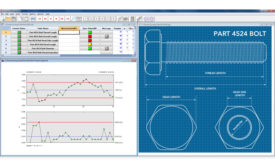Home » Keywords: » ROI calculation
Items Tagged with 'ROI calculation'
ARTICLES
Manufacturers already collect data, but many can stand to optimize their processes.
Read More
5 Questions to Ask When Evaluating an SPC Provider
Make the right SPC software investment by asking the right questions.
February 1, 2019
What is the Value to Your Company of a Leaner, More Productive Inspection Process?
You may be surprised!
June 15, 2018
Trends in Equipment Budgeting
While equipment budgets are as important as ever, the new budget seeks to determine ROI first with rented equipment
December 6, 2013
Get our new eMagazine delivered to your inbox every month.
Stay in the know with Quality’s comprehensive coverage of the manufacturing and metrology industries.
SIGN UP TODAY!Copyright ©2024. All Rights Reserved BNP Media.
Design, CMS, Hosting & Web Development :: ePublishing




